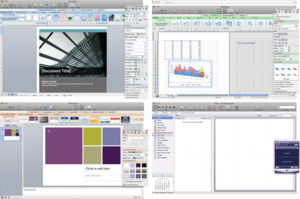For a computing platform that has been given up for dead more times than I care to remember, the PowerPC community of Mac users sure knows how to keep on keeping on.
That’s because with the release of updates to modern standards browsers like Roccat, TenFourFox and Leopard-WebKit, the platform cannot truly ever have a stake driven through its heart.
To the contrary, the ongoing reported demise of the PowerPC Mac has been greatly exaggerated. In the United States, but more so in Europe and Asia, PowerPC Macs are still getting a good share of utility as both web and office computing hardware tools of choice. On these continents, value, productivity and functionality is revered over the latest and greatest (that often leave sour tastes once driven off the lot–aka taken out of the box after you get it home).
LibreOffice will be there for the PowerPC Mac community when they decide Microsoft Office 2008 for Mac no longer serves their needs, too. For those users desiring web capabilities, email, text editors and spreadsheet applications, it seems PowerPC Macs are actually doing just fine, thank you very much.
While users of the latest Windows PCs and Apple Macs have a choice of Google Chrome and Firefox (and Safari for Mac users—don’t know that it’s worth mentioning Safari is available for Windows PCs), the Mac PowerPC trio of TenFourFox, Leopard-WebKit and Roccat make life on the web rather pleasant on a PowerPC Mac running OS X 10.5.8 Leopard. This ancient by modern view operating system is no longer receiving security updates from Apple, but then again, were PowerPC Mac users ever really concerned about that on the PowerPC platform?) Fear of security exploits on PowerPC Macs are just so much FUD; PowerPC Mac users hear talk of malware and viruses, but disregard it with collective, simple, shrugs.
Functionality is where it is at for the now “underground-like” Mac PowerPC community. Abandoned by Apple and mainstream commercial software manufacturers, the user base takes it all in stride, making use of the overall still impressive software solutions available to them.
What would make it easy to actually put a nail in the PowerPC coffin would be if the “never say die” hardware would fail like its modern day brethren—that is, all too soon. But it’s too late for that. Unlike their sexy Intel Mac modern day counterparts (that do not possess the same track record for durability), these “refuse to quit” Mac G3’s, G4’s and G5’s just keep going…and going…and going.
Compatibility used to be a problem for Mac users of PowerPC vintage machines. But with the passage of time, more and more solutions that were once PC or Intel Mac only, have found their way to working fine on PowerPC Macs. One example can be found with Wi-Fi USB sticks to surf the web wirelessly. As long as you have installed a USB 2.0 PCI card on your G4 tower, for instance, you can surf the web at wireless “G” and “N” speeds. If you only have USB 1.1 ports, the USB wireless stick adapters will still work, just only at “B” speed protocols. I use Netgear, Newer Technology and Edimax solutions for my wireless surfing on both PCs and Macs—new and old, with nary a hiccup.
While they are not 237 years old (it only feels that way sometimes), Independence Day is a day for PowerPC Mac users to rejoice everywhere. Bonding with citizens of this great country celebrating Independence Day across the land, PowerPC Mac users celebrate independence from the tyranny of those who would dare attempt to dissuade them from their beloved friends not only on Independence Day, but every day.





1 Pingback